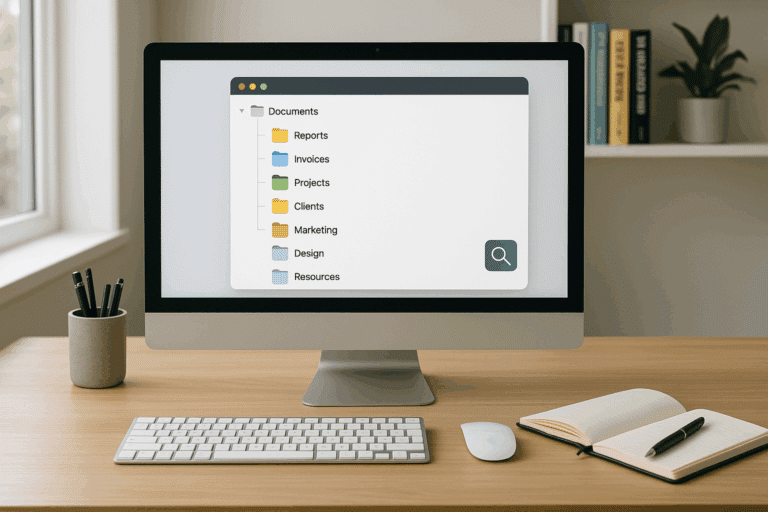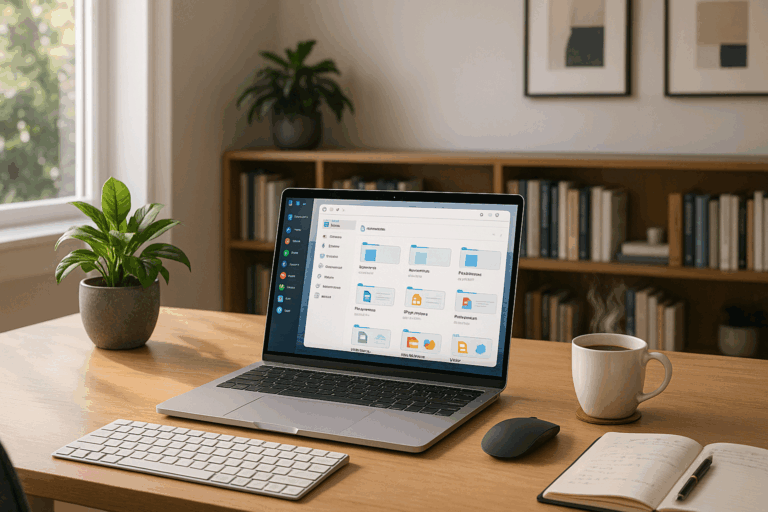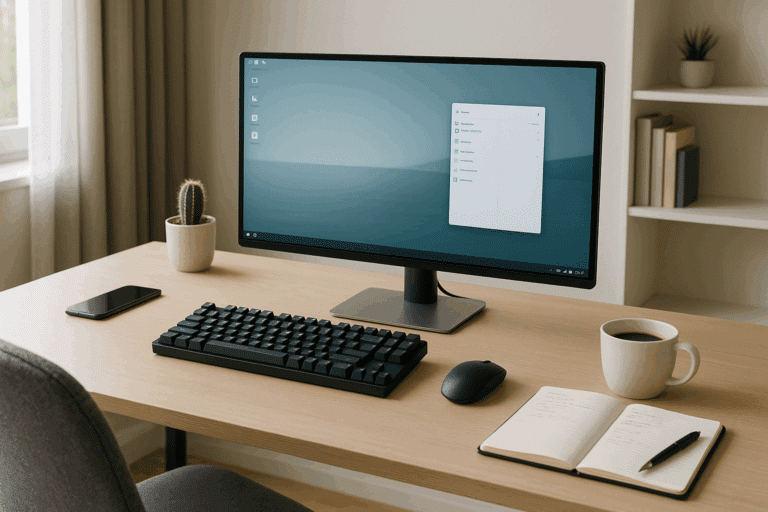Picture this: you are sitting at your makeshift home office, laptop screen bursting with tabs, notifications pinging from your phone and email inbox overflowing. The digital world, once a place of infinite possibilities, now feels more like a crushing wave of information overload, threatening to capsize your productivity and peace of mind. And you are not alone. In this era of remote work, many professionals are feeling the strain of digital overload, wrestling to find a healthy balance between connectivity and productivity.🌊💻
Indeed, it seems we are paradoxically drowning in the same technology that allows us to swim in the waters of remote work. But fear not. This blog post is your lifeguard, your lighthouse, guiding you out of the depths of digital overwhelm to the shores of optimal efficiency and balance.🏊♂️🔆
In this extensive, three-thousand-word deep dive, we will unlock the secrets to mastering digital overload in remote work, ensuring you surf the waves of productivity rather than sink beneath them. And rest assured, this is not about adopting an ascetic, digital-free lifestyle. It’s about learning to integrate technology in a way that optimizes our work, rather than dictating it.🔑🌊
Cracking the Code of Digital Overload
The first part of our journey will take us into the heart of digital overload. What is it exactly? Why does it affect our productivity and mental health? We’ll peel back the layers of this pervasive problem, shedding light on its root causes, and the ways it manifests in our work and personal lives. 🧩🔦
The Science of Productivity in the Digital Age
Next, we will delve into the realm of productivity. This is not about working harder but smarter. We will sift through the science behind productivity in the digital age, demystifying myths and highlighting research-backed strategies to boost your efficiency. You’ll learn the art of managing your energy, not just your time, and why this is critical in the age of remote work.⚛️🎯
Navigating the Storm: Techniques for Managing Digital Overload
Our journey continues with a toolkit of techniques for managing digital overload. From digital detoxes to the use of productivity apps, we’ll explore a variety of strategies that can help you reclaim control over your digital environment. It’s all about equipping you with the tools to navigate the storm of digital overload, rather than be swept away by it.⛈️🧰
Striking a Balance: Integrating Technology and Well-being
Lastly, we will discuss how to strike a balance between our digital lives and overall well-being. This is crucial. We will present practical steps towards building a healthy relationship with technology, a symbiosis where we harness its power without being ensnared in its digital tendrils. A harmonious blend of digital connectivity and personal well-being.⚖️🌿
So, strap in for this enlightening exploration. By journey’s end, you’ll have a robust understanding of digital overload and a treasure trove of strategies to master it. Let’s transform your digital landscape from a stormy sea of overwhelm into a smooth sail towards productivity, efficiency, and balance.🏄♂️💡
🚀Understanding Digital Overload in Remote Work
With the advent of remote work, technology has become a paramount tool in our daily tasks. Emails, video conferences, instant messages, task management tools – the list goes on. Although these tools have made our lives easier, they have also led to a new phenomenon: digital overload. This term refers to the overwhelming amount of information and communication that we encounter daily in our digital workspace. It can lead to stress, burnout, and reduced productivity.
In order to combat digital overload, we need to understand its origins and impacts. Digital overload arises from the intersection of two trends: the increasing complexity of our digital tools, and the increasing demands of our work. When these two factors combine, it can create a perfect storm of overwhelming digital noise. As a consequence, many of us struggle to keep up with the constant flow of information, and our productivity suffers.
Fortunately, there are strategies and best practices we can follow to manage this digital overload and unlock our productivity potential. By implementing these practices, we can regain control over our digital workspace and achieve a better work-life balance. But first, let’s delve deeper into the causes and effects of digital overload.
⚙️The Impacts of Digital Overload
From a constant barrage of notifications to overflowing inboxes, digital overload can take many forms. Its impacts are multifaceted, affecting our productivity, mental health, and even our relationships. Let’s take a closer look at these impacts.
Productivity is often the first casualty of digital overload. The constant interruptions from notifications can break our focus and hinder our ability to concentrate on tasks. In fact, research has shown that it can take up to 23 minutes to fully regain focus after a distraction. This not only leads to decreased productivity but also to increased work hours as we struggle to catch up with our tasks.
Mental health is another area that is heavily impacted by digital overload. The constant pressure to be “always on” and the inability to disconnect can lead to stress, anxiety, and burnout. This is particularly relevant in the context of remote work, where the boundaries between work and personal life can easily blur.
Now, let’s examine some strategies for managing digital overload and enhancing our productivity.
🎯Strategies for Mastering Digital Overload
There are several strategies for managing digital overload, each addressing different aspects of the problem. By combining these strategies, we can create a comprehensive approach that helps us regain control over our digital workspace.
One of the first steps is to declutter our digital environment. This involves removing unnecessary apps, turning off non-essential notifications, and organizing our digital files. A clean and organized digital workspace can help reduce cognitive load and improve focus.
Time management techniques can also be beneficial. Techniques such as the Pomodoro Technique, which involves working for a set period of time (e.g., 25 minutes) followed by a short break (e.g., 5 minutes), can help manage our focus and energy. Other techniques, such as time blocking, can help us allocate specific times for different tasks and reduce the impact of interruptions.
Finally, setting boundaries is crucial, especially in a remote work context. This includes setting clear work hours, taking regular breaks, and ensuring we have time to disconnect and recharge. By setting these boundaries, we can maintain a healthier work-life balance and reduce the risk of burnout.
Comparison of Time Management Techniques
| Technique | Method | Benefits |
|---|---|---|
| Pomodoro Technique | Work for 25 minutes, then take a 5-minute break | Improves focus and reduces fatigue |
| Time Blocking | Allocate specific times for different tasks | Reduces interruptions and increases productivity |
For more detailed strategies on managing digital overload, check out this insightful video by Thomas Frank: “How to Beat Digital Overload and Organize Your Mind” (Thomas Frank on YouTube).
🔑Unlocking Productivity in Remote Work
Mastering digital overload is key to unlocking productivity in remote work. By managing our digital environment, employing effective time management techniques, and setting clear boundaries, we can optimize our productivity and achieve a healthier work-life balance.
However, it’s important to remember that mastering digital overload is a journey, not a destination. It requires continuous effort and adjustment as our work demands and digital tools evolve. But with the right strategies and mindset, we can turn digital overload from a challenge into an opportunity for productivity and growth.
So, start your journey today. Declutter your digital workspace, try out different time management techniques, and set clear boundaries. With these strategies, you’ll be well on your way to mastering digital overload and unlocking your productivity potential.
For further insights into this topic, you can watch the video “Digital Minimalism: How To Declutter Your Online Life” by Matt D’Avella on YouTube. So, what are you waiting for? Start unlocking your productivity today!

Conclusion
In conclusion, we have navigated through a vast ocean of complex topics in the realm of IT and software engineering. We’ve explored the intricate workings of programming languages, the importance of coding best practices, and the significance of utilizing robust software development methodologies.
In our journey, we stressed the role of efficient code writing, which not only boosts the performance of software applications but also significantly reduces the time and cost of maintenance. This underlines the necessity for every aspiring software engineer to master coding principles and continuously improve their skills.
We have also dived into the fundamentals of software development methodologies, their various types, and their implementation scenarios. Each approach has its unique advantages, and their judicious application can result in significant improvements in project outcomes. Remember, the choice of methodology depends greatly on the requirements of the project and the team’s capabilities.
Moreover, the significance of security in software development has been another key topic. With cybersecurity threats on the rise, it has become paramount for developers to adopt secure coding practices and integrate security measures right from the initial stages of software development.
These are complex concepts that require a deep understanding, and it’s crucial for software engineers to continually update their knowledge and skills in these areas. In the fast-paced world of software engineering, stagnation is not an option.
As we wrap up, I encourage you to reflect on these concepts, revisit the intricate details, and engage in further research. If you have any thoughts, questions, or additional insights, feel free to share them in the comments section below. Your participation enriches the conversation and enables us all to learn and grow.
Do not hesitate to share this article with your colleagues, friends, or anyone interested in software engineering. Spreading knowledge is a wonderful way to contribute to the growth and advancement of our industry.
And remember, the journey to mastery is a continuous process. Keep learning, keep evolving, and keep pushing the boundaries of what you know and what you can do.
🚀 Explore more on software engineering here 🚀
🔒 Dive deeper into secure coding practices here 🔒
Stay inspired and never stop learning. The world of software engineering awaits your contributions.
🌐 Join the global community of software engineers here 🌐
To cite this article:
Almeida, R. (2022). The Complex World of Software Engineering: A Comprehensive Guide. Rodrigo’s Tech Insights. Retrieved from https://rodrigo-tech-insights.com/software-engineering-guide
Remember, software engineering is not just about codes and algorithms; it’s about creating solutions that make the world a better place. So, let’s keep coding, creating, and transforming the digital landscape.
Happy coding! 😊
[Tag: HTML, Software Engineering, IT, Coding Best Practices, Cybersecurity]
💡 Keep sparking new ideas and making a difference! 💡



